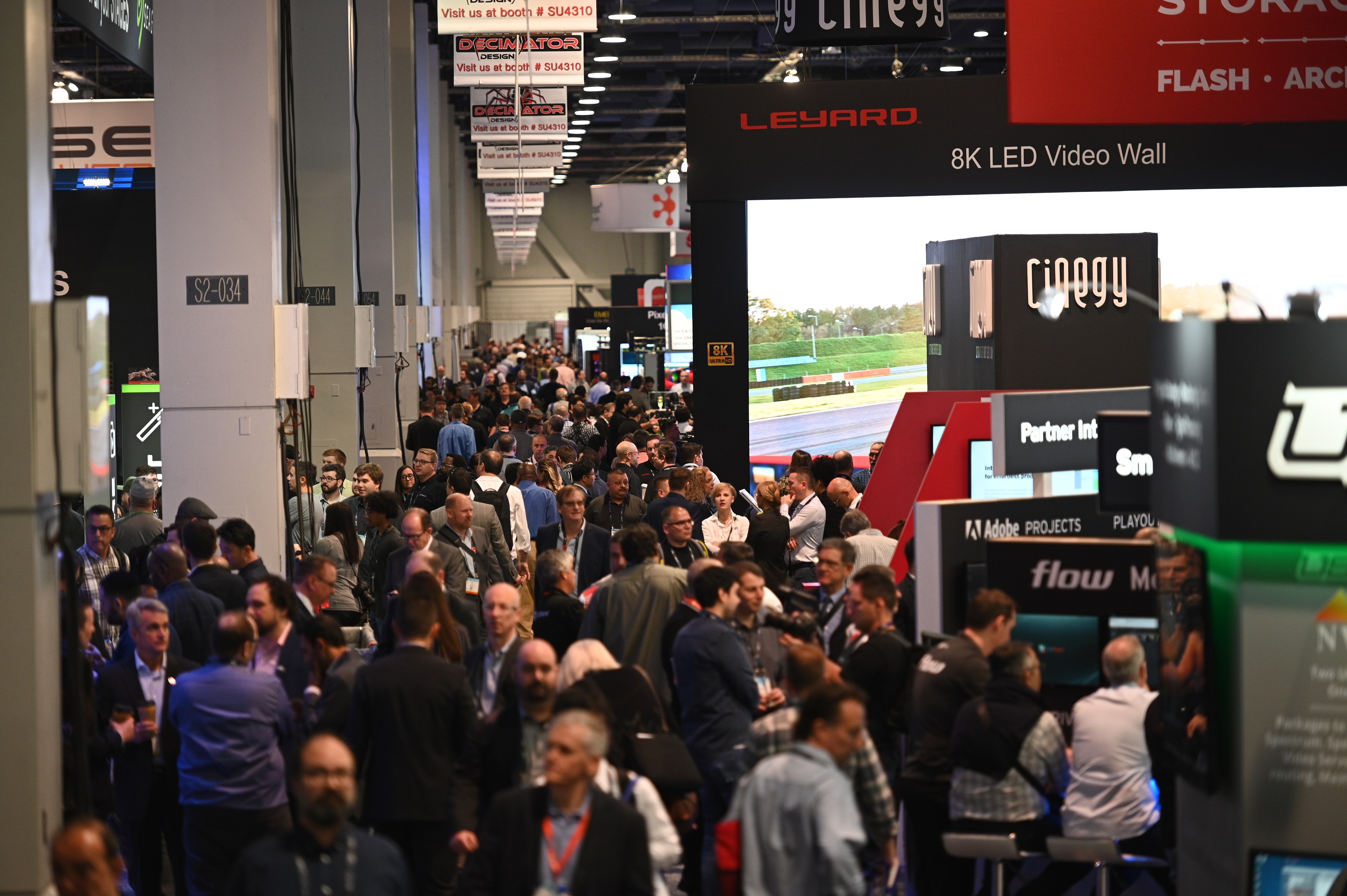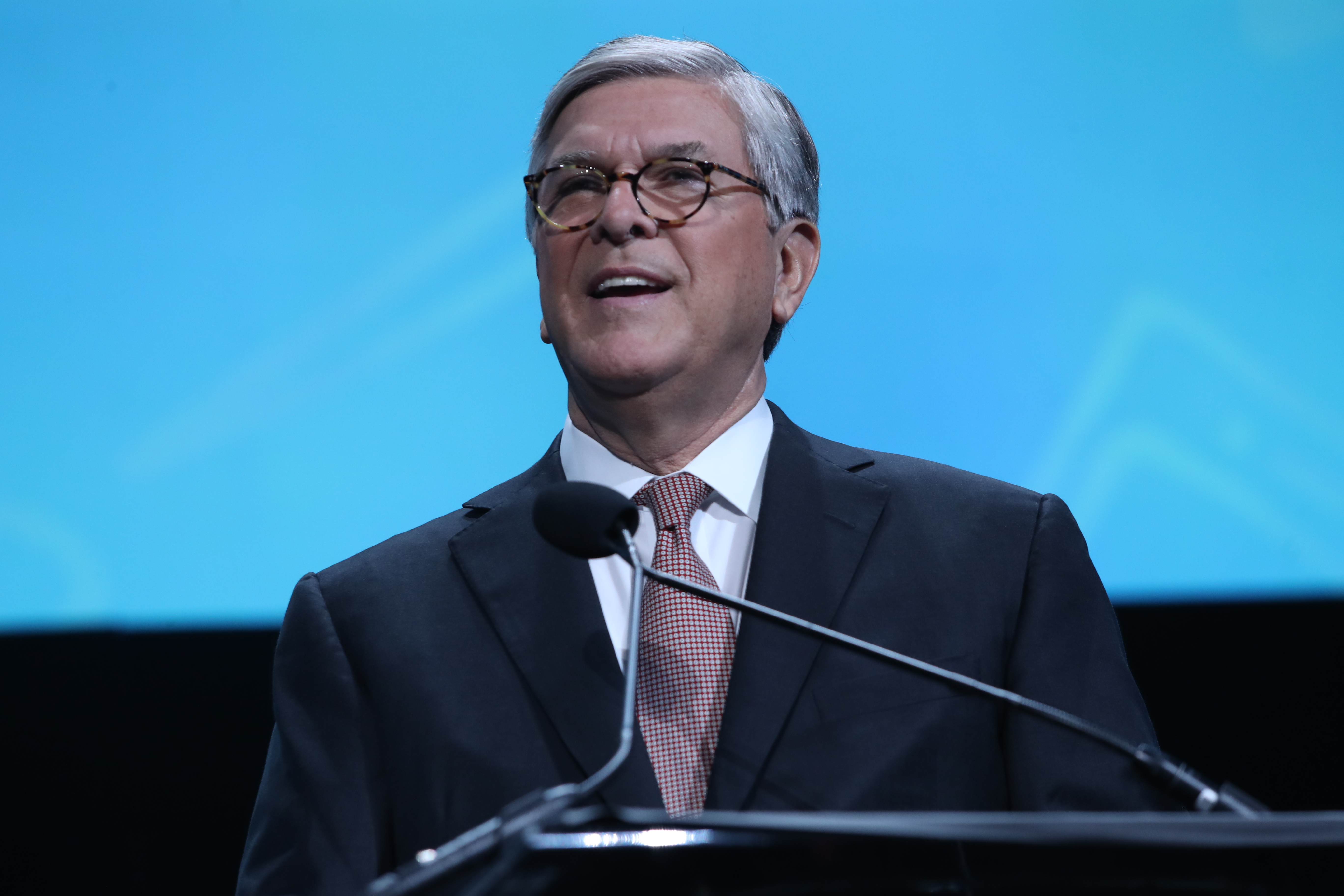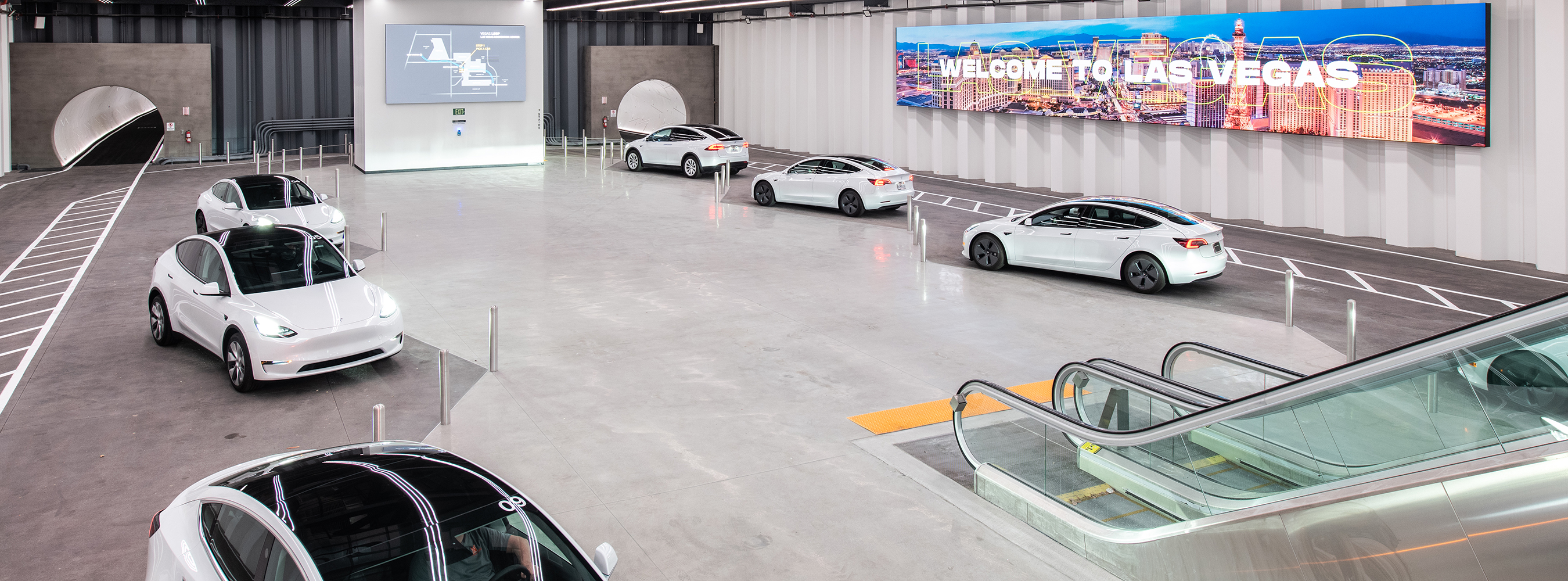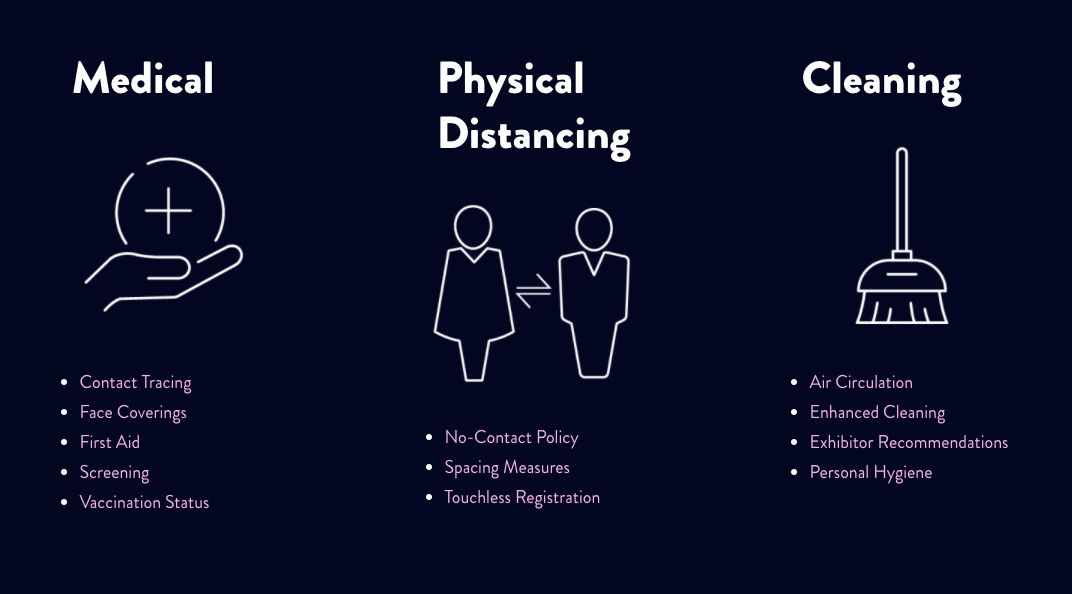NAB Show to Reflect on a Year of Adjustment and Adaptation
Amid safety protocols, show will try to help answer pressing questions about what lies ahead

LAS VEGAS—Change will be afoot when the 2021 NAB Show returns to Las Vegas, Oct. 9-13. Masks will be ubiquitous. You’ll need proof of a COVID-19 vaccine to even get in the door (sidebar, below). And the results of the once-in-a-lifetime shift that the media industry faced over the last 18 months will be on full display.
After the disruption of the past year, the National Association of Broadcasters has the opportunity to help the industry answer pressing questions. How do you stand out in a sea of content offerings? How do you effectively go about monetizing that content? What’s the best way to assess what worked—and what didn’t—over the past 18 months?
RETHINK OUR APPROACH
“This industry, as with most, has had to rethink its approach to doing business and in some cases even reinvent,” said Chris Brown, executive vice president and managing director of global connections and events for the NAB. “No doubt that has been challenging but it has opened new opportunities,” he said, adding that the pandemic forced content creators to tighten their focus on serving the needs of the customer, whether that is the consumer, content creator or distributor. “The entire dynamics of the industry have evolved around a new view of media consumption,” he said. “The options are many and the appetite for content has never been greater.”
So where do we go from here? To stay relevant, companies in this environment must rethink their view of the customer and their view of the product they deliver. “Few can afford to stay in their original lane,” Brown said.
The NAB Show will attempt to help its attendees to highlight a path ahead through a series of educational sessions, exhibits, pavilions and conferences.

As the world has changed, so have the logistics of this year’s show—indoor exhibits will be held in the Central and North Halls only, with outdoor exhibits in the LVCC Silver Lot. The NAB Radio Show and NAB SMTE (Sales and Management Television Exchange) will take place in the Westgate.
Get the TV Tech Newsletter
The professional video industry's #1 source for news, trends and product and tech information. Sign up below.
So broadcasters may be asking: how does the industry go about capitalizing on all that was learned during the pandemic shutdown—while working remotely and trying to expand this workflow into a more continuous and efficient system?
“Prior to COVID, some organizations already had simplified ‘one-off’ situations like a graphics operator working from home,” said one industry insider and a frequent contributor to TV Tech. Then news organizations at the start of the COVID experience added dozens—sometimes hundreds—of additional workflows in order to facilitate a true end-to-end environment but outside a conventional workplace.
All this change has led to a few technology shifts—improved codec efficiencies, communications that involved hybrid cellular and internet-based solutions, enhanced remote accessibility and security over conventional ISP paths, increased adoption of cellphone camera video, bonding for LTE or 5G connectivity, and more. “Many of these, while in place or in use for occasional services, now had to be ruggedized for near full-time use,” the industry insider said.
EMPHASIS ON INNOVATORS
Recognizing this shift, the NAB rallied around the theme of adaptation for 2021. “The industry is no stranger to change, but this past year has taken the concept to a new level,” the NAB’s Brown said.
Through the show floor and a series of educational offerings, the NAB Show is placing special emphasis on innovators and other companies driving change. CineCentral, a new destination on the show floor will showcase changes in preproduction, production and post and will look at how content creators are employing the new technology, from VR to improved workflows.

Another new destination— the Future of Delivery—will have an on-floor theater focusing on 5G, mobile delivery, streaming, LEO satellite and other technologies impacting the future of distribution and delivery.
The show will also give attendees a 360-look at where things stand with streaming. When consumers in mid-2020 responded to scuttled social plans and countywide lockdowns with increased consumption of streamed content, content creators answered, offering fairly inexpensive subscriptions and exclusive content. Now, 18 months later, as subscriptions continue to rise, content creators are responding with new options like niche programming, bundled offers and VIP access.
According to Nielsen, as of May 2021, streaming usage across all television homes has climbed to 26 percent of all time spent on TV. Add broadcast programming to that pool and streaming/broadcast combined now account for half of all television time. When production ramps back up and new content enters the space, that will drive additional traction, said Brian Fuhrer, senior vice president of product strategy for Nielsen. Other estimates surmise that the number of homes with televisions that are watching streaming services will hit 33 percent by year’s end.
THE STREAMING EXPERIENCE
OTT looks to be fairly stable, said one broadcast industry insider, with perhaps one exception: broadcasters are judging the competitive nature of the streaming services they offer across the more traditional “big four” networks to stay relevant, such as trying to mirror the model set by Disney+. Other broadcast groups are making adjustments in an effort to meet changing demands, he said.
In response, the Streaming Experience in the Central Hall lobby will look at connected TV advertising, video quality and content bundling strategies alongside demonstrations of more than 50 streaming video platforms and devices. “The Streaming Experience will provide a first-ever look at the full range of streaming offerings and the experience offered,” Brown said.
Several other technologies are expected to grow in 2022 too. New 5G applications will be expected, as well a transition to products like PCoIP, next-gen intercom products, and a renewed emphasis on software-defined systems and cloud-based playout products.
Others are looking ahead to efficient means of monetizing content to best take advantage of digital platforms. “One priority we want to explore further is an efficient workflow to decorate our video streams with appropriate SCTE markers,” said David Burke, senior vice president and chief technology officer for the Gray Television station group. “[We want] to cleanly indicate the start, end and duration of all commercial breaks, particularly during live or breaking news, so that we can maximize the inventory fill and revenue potential on our digital platforms.”
According to Brown, what makes this year exciting is not just that it has been a while since we have been able to come together, but it is that there is so much possibility.
“The industry has been resilient and has set itself up for great success going forward,” he said. “I think it will be emotional for everyone to finally be together and it will represent an important milestone for all involved.” l
To register for the show, visit nabshow.com.

Health and Safety at the NAB Show
Multiple indicators show a strong eagerness among the NAB Show community to return in person, said Chris Brown, executive vice president and managing director of global connections and events for the NAB.
But NAB said it is also keenly aware of health and safety concerns tied to the spread of the COVID-19 Delta variant, Brown said. In response, the association is putting what it calls a comprehensive, data-driven plan in place that prioritizes safety and creates a productive environment.
In mid-August, the association announced that all attendees and participants must provide proof of COVID-19 vaccination to enter the convention. Attendees will not be required to wear masks, however. This follows an announcement on August 16 by Nevada’s Gov. Steve Sisolak who said that large indoor venues will be allowed to opt out of the state’s mask requirements as long as everyone is vaccinated.
“This is cutting edge. There’s no other venues in the country that are doing this,” Sisolak told the Associated Press. “I think it is going to get more people wanting to go to an event because they know that when they walk in that arena, or that stadium, everybody’s vaccinated.”
The NAB is currently finalizing a series of protocols that will maximize the safety of attendees. According to Brown, this process has involved consultation with health and safety experts, gathering feedback from a range of exhibitors and attendees, and review of the safety measures recommended by national and local health authorities.
Susan Ashworth
Susan Ashworth is the former editor of TV Technology. In addition to her work covering the broadcast television industry, she has served as editor of two housing finance magazines and written about topics as varied as education, radio, chess, music and sports. Outside of her life as a writer, she recently served as president of a local nonprofit organization supporting girls in baseball.

